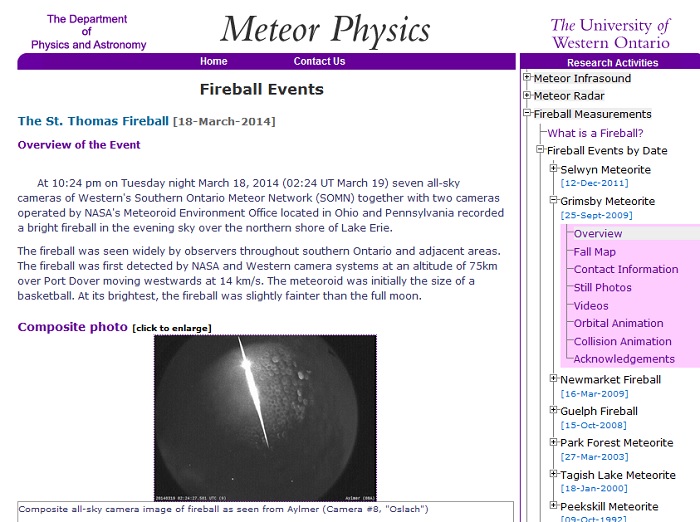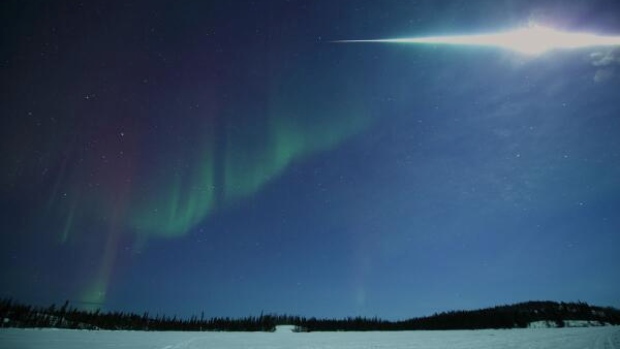.
Am Dienstag konnte über dem Südosten von Kanada eine helle Feuerkugel beobachtet werden welche mit einem Donnergrollen verbunden war. Nachfolgende Frams von Überwachungs-Kameras welche die Feuerkugel erfassten:
.
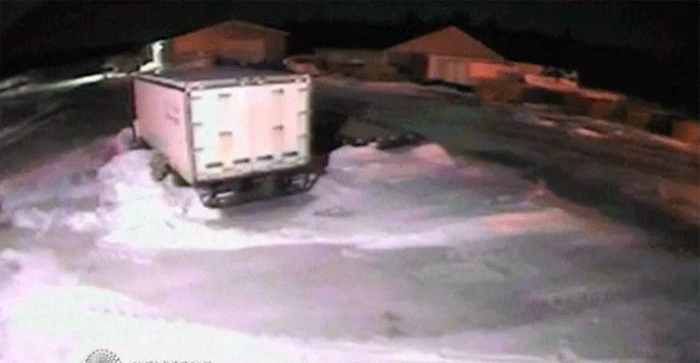
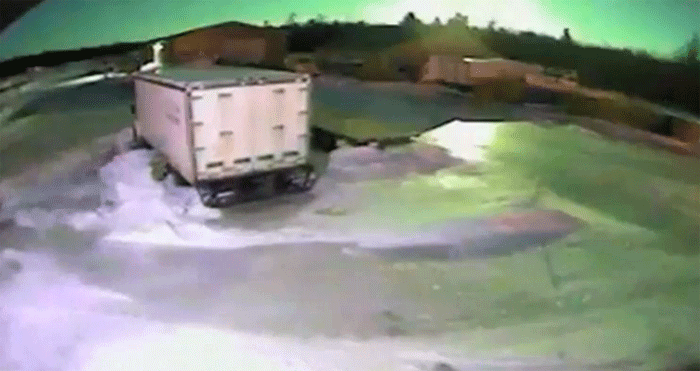
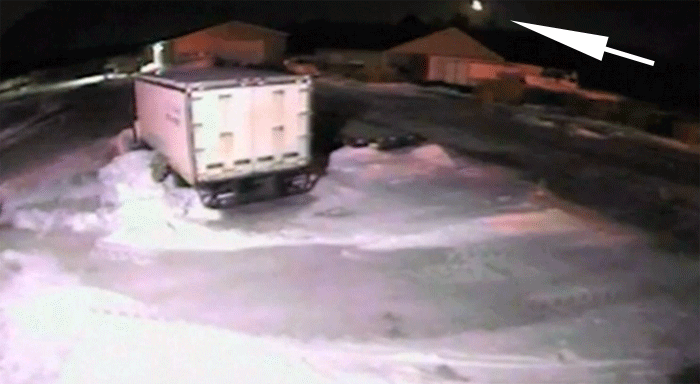
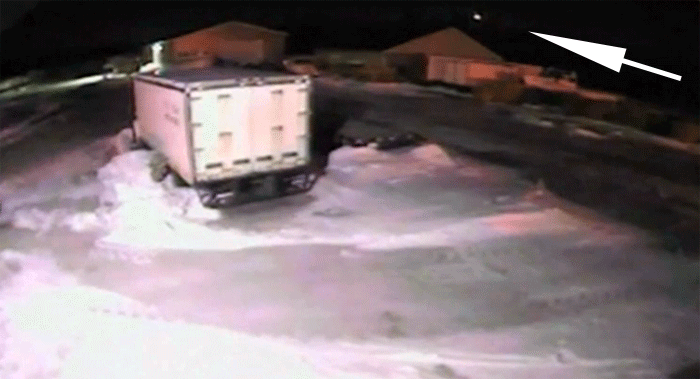
...


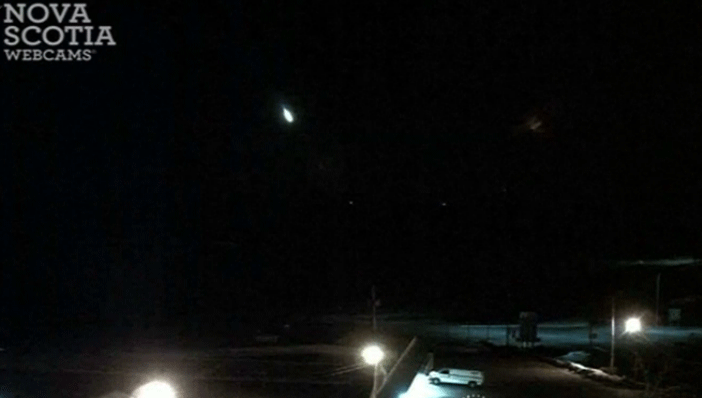

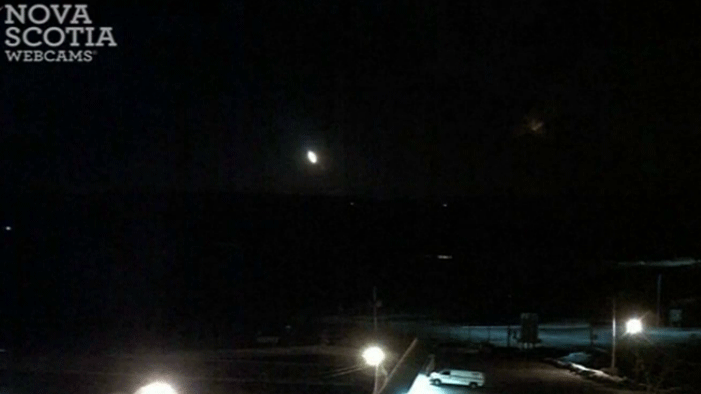
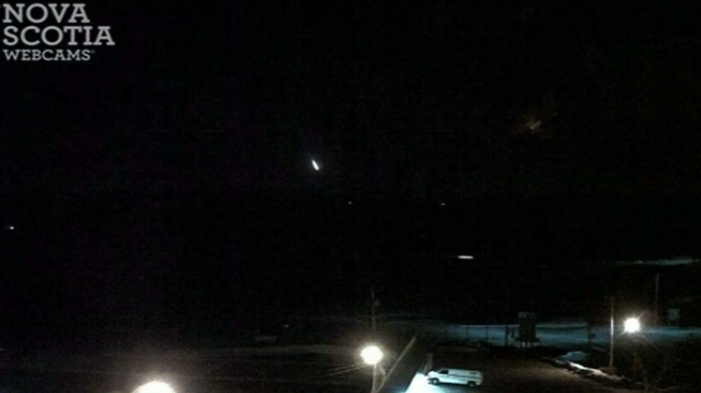
Quelle: YouTube
.
Update: 22.03.2014
.
Live in southern Ontario? Check your yard for meteorite fragments
Scientists are asking residents to keep their eyes peeled for chunks of meteorite that may have crashed into the earth in southern Ontario.
Scientists at Western University in London, Ont. believe the meteorites hurtled to the earth last Tuesday night, when seven of the school’s all-sky cameras picked up a fireball shooting through the sky over St. Thomas, about 200 km west of Toronto.
The fireball was about the size of a basketball, the scientists estimate, and was first spotted over Port Dover, Ont. The fireball then “went dark” over St. Thomas.
“It spent about five seconds in luminous flight over southern Ontario,” Western’s Dr. Peter Brown told reporters Friday. “It was seen by a lot of people in the Toronto area, where it was clear.”
The recordings from the cameras showed that one or more rocks survived passage through the atmosphere, Brown said. Golf ball or baseball-sized chunks of meteorite likely hit the ground to the north and west of St. Thomas.
Scientists are asking residents to poke around their yards for fragments. Residents who heard a distinct whistling sound, like artillery, could very well find a chunk of meteorite nearby. They should look for matte black rocks, which will stand out against the regular rocks and stones in the area.
In Canada, meteorites belong to the owner of the land on which they are found.
“Meteorites, when they are freshly fallen and especially when the ground is still reasonably frozen like this, they sit on the surface and kind of look weird and attract your attention,” said Phil McCausland, assistant professor and meteorite curator at Western.
Meanwhile, the school will organize a search team to look through local fields.
Meteorites are important for scientists because they can reveal so much about the history of the solar system.
“The real value in this rock is the science side of it,” Brown said. “This is very unusual to have a fireball that produces a meteorite where you know the orbit. That’s only happened maybe 20 times in the past. So each one of those is like a Rosetta stone, telling us something about the solar system.”
.

A composite all-sky camera image of the fireball as seen from Aylmer, Ont. on Tuesday, March 18, 2014 is seen in this image released by Western University.
Quelle: CTV
.
Ontario residents asked to check their backyard for space rocks after meteorite crashes down near St. Thomas
.
ST. THOMAS, Ont. — University researchers say at least one chunk of a meteorite may have landed in southwestern Ontario this week — and more rocks may also be waiting to be found.
Astronomers from Western University are asking people to check their properties for any remnants of the basketball-sized meteor they say likely came down near St. Thomas, Ont.
In Canada, landowners who find a meteorite on their property own it — but the researchers say they’d love to have a look at what they call a “Rosetta Stone” of scientific information.
Peter Brown, who specializes in the study of meteors and meteorites, says a “fairly bright” fireball was detected March 18 by Western’s network of all-sky cameras as it passed over southern Ontario.
Researcher Phil McCausland says any pieces will likely be the size of a golf ball or a baseball and probably came down somewhere to the north or west of St. Thomas.
He says if any such rock is to be found, it’s likely a member of the public will find it and the researchers are urging those who do find something to contact the university.
Brown says the fireball lasted for about five seconds before going dark and was seen by lots of people, particularly in the Toronto area, where it was clear that night.
“Based on all the video records we know that at least one and maybe more rocks survived the passage of this object through the atmosphere,” said Brown.
Someone nearby where the rocks fell might have heard a whistling sound or a thud, he said.
It’s the first significant meteorite fall in southern Ontario in about five years, Brown said, adding meteorites usually fall into lakes rather than on the ground where they can be found.
Quelle: National Post
Western University astronomers seeking meteorites that may have crashed near St. Thomas, Ontario
Researchers from Western University have released footage of a basketball-sized meteor that was almost as bright as the full moon. The meteor lit up the skies of southwestern Ontario earlier this week and Western astronomers are now hoping to enlist the help of local residents in recovering one or more possible meteorites that may have crashed in the area just north of St. Thomas, Ontario.
Peter Brown, Director of Centre for Planetary Science and Exploration (CPSX), who specializes in the study of meteors and meteorites, says that on the evening of Tuesday, March 18 a long-lasting fireball which occurred near 10:24 p.m. was detected by seven all-sky cameras of Western's Southern Ontario Meteor Network (SOMN) and two camera systems in Ohio and Pennsylvania jointly operated with NASA's Meteoroid Environment Office.
The brilliant fireball started near Port Dover at a height of 75 km and moved almost due westward before ending at 32 km altitude between Aylmer and St. Thomas, Ontario. One or more meteorites were produced by the slow fireball based on the video records from the cameras.
Brown along with Phil McCausland, an Assistant Professor and Meteorite Curator at Western's Department of Earth Sciences, are now working to get the word out amongst interested people who may be willing to see if they can spot any fallen meteorites.
The two researchers will be joined by Bill Cooke, lead of NASA's Meteoroid Environment Office, tomorrow (Friday, March 21) at St. Thomas Municipal Airport at 11 a.m. EST to provide a complete update to media.
Researchers at Western are interested in hearing from anyone approximately 5 km north or northwest of St. Thomas, who may have witnessed or recorded this event, seen or heard unusual events at the time, or who may have found possible fragments of the freshly fallen meteorite.
According to McCausland, meteorites are of great scientific value. He also points out that in Canada meteorites belong to the owner of the land upon which they are discovered. If individuals intend to search they should, in all cases, obtain the permission of the land owner before searching on private land.
Meteorites may best be recognized by their dark and scalloped exterior, and are usually denser than normal rock and will often attract a fridge magnet due to their metal content. In this fall, meteorites may be found in a small hole produced by their dropping into soil. Meteorites are not dangerous, but any recovered meteorites should be placed in a clean plastic bag or container and be handled as little as possible to preserve their scientific information.
If you have questions, observations or possible meteorites from this March 18, 2014 event, please contact Phil McCausland at 519-661-2111, ext. 88008 or on his cell at 519-694-3323.
